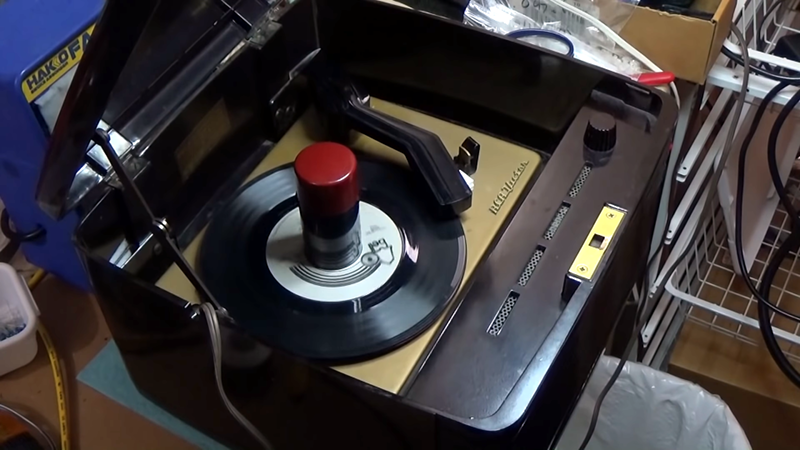Although vinyl records have had a bit of resurgence, they are far away from their heyday. There was a time when 45 RPM singles were not just how you listened to music at home, but they also populated the jukeboxes you’d find in your local malt shop or anywhere else in public. [Fran] has an old 45 RPM “desktop jukebox” from RCA. It really isn’t a jukebox, but an automatic record changer dating from the 1950s. The problem is, the cartridge was toast. Replacing it wasn’t a big problem, even though replacing it with an exact duplicate wasn’t possible. But, of course, that was just the start.
You can see in the video below, that there were some weight problems with the cartridge, but the changer part would not work. She tears it down and makes some modifications. She even pulled out the schematic which had three tubes — one of which was just a rectifier.
If you look at the schematic, it is clear the real engineering here is the mechanical parts not the electrical. [Fran] does talk about the trick used to run the tube filaments from 115 volts, which was common back then but might not be obvious if you aren’t a tube designer.
Sure, your phone can work like a jukebox with a million songs on it, but there’s something suspenseful about watching the next record drop and the tonearm finding the groove. Not everyone appreciated records, though. [John Cage] and [Mike McCann] both had blank records you could place in a jukebox to let patrons buy a few minutes of silence. Think we are kidding? You can hear the London Symphony Orchestra perform [Cage’s] 4’33” in the second video, below. If you can read music, you can even get the sheet music for it, online.
We love the old full-size jukeboxes. It is a shame to gut the old beasts and put Spotify players in them, but [revenhoj] had an approach we fully endorse.
















(interrupting the comment silence with a silent comment)
The 250 ohms marked on the schematic for the primary of the output transformer is its DC resistance, not audio impedance. You can convince yourself of this by using Ohm’s law. The audio impedance is probably quite a bit higher.
it must be, either that or a typo. at 250ohms impedance the tube would likely overheat and die. unless this is a very large and high-power unit… either 2500ohms impedance or 250ohms DC resistance. this is one of the things that sets an audio transformer apart from a 50/60hz power one; the DC resistance is a bit higher and will fry if used as a 50/60hz power unit. for power in this case i would expect 25 or even 2.5 ohms DC.
Many people say that 4’33” is the finest music John Cage ever made.